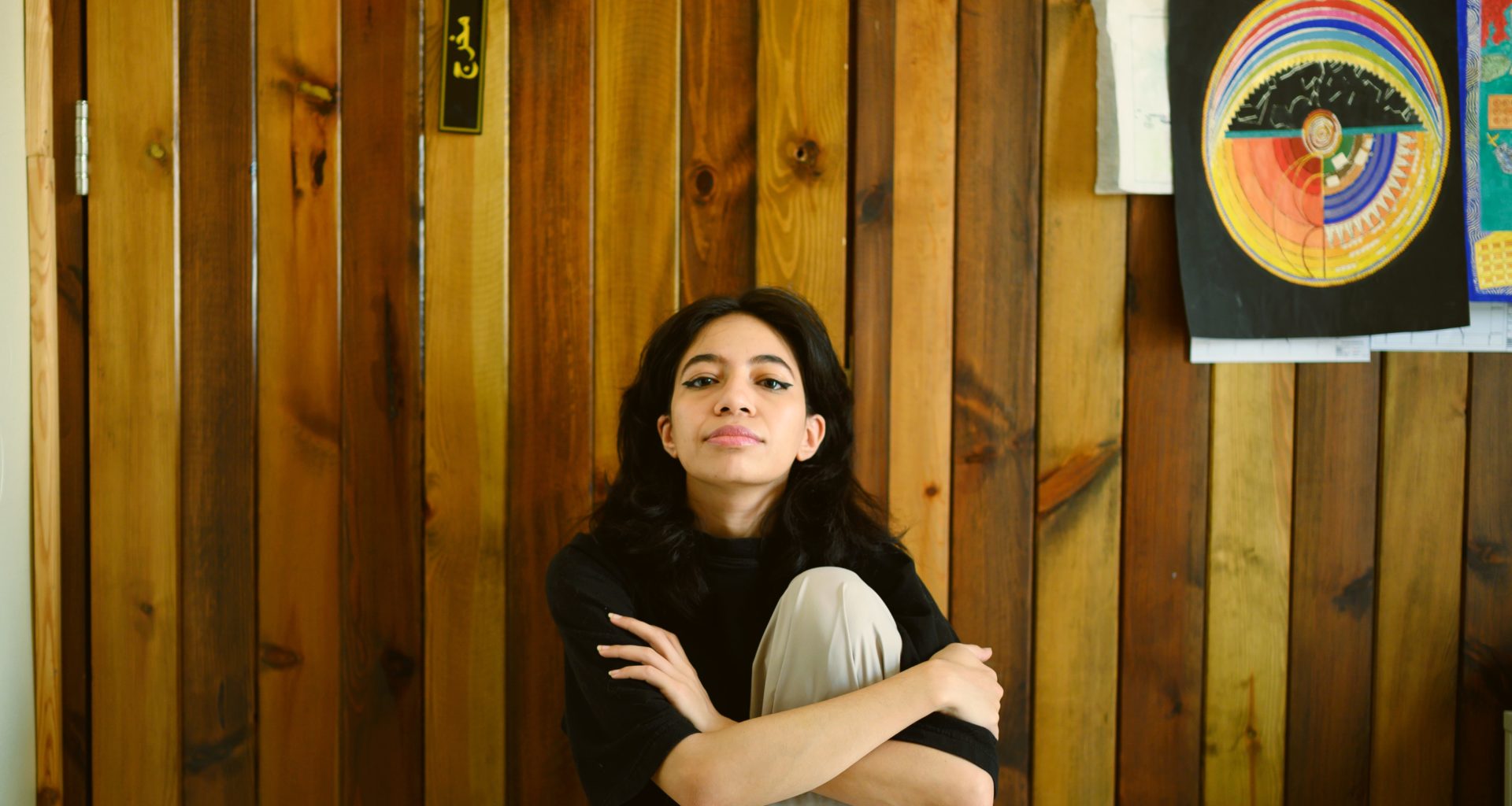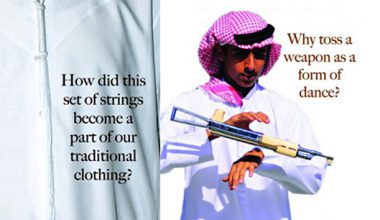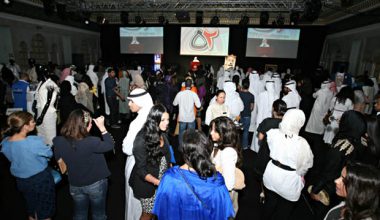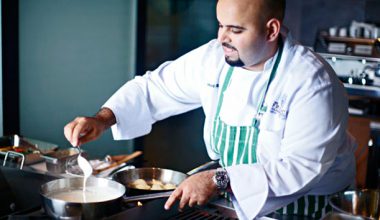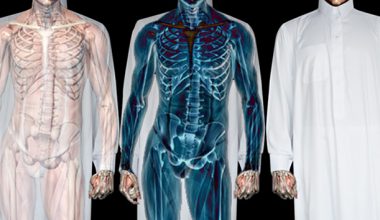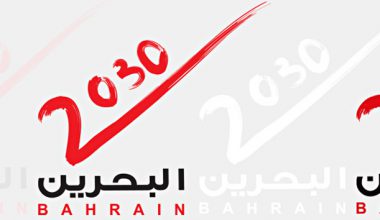Words: Saira Malik
Images: Courtesy of Basmah Felemban
A self-taught graphic designer born in Jeddah, Saudi Arabia, Basmah Felemban’s artistic journey is one of perseverance and constant evolution. She has exhibited in many international and local exhibitions such as Art Dubai, 21/39, contemporary art Istanbul, Venice Biennale, and Art AbuDhabi at an early stage of her career. After being impressed with her extensive portfolio and interview, she was accepted to undergo an MA in Islamic and Traditional Art from the Prince’s School of Traditional Arts in London, UK in 2017.
In this interview, Basmah shares insight into her creative career, what her artistic process looks like, how she’s supporting the Saudi art community, and what she has in store for the future.
Saira Malik (S.M.): How did you develop such a keen interest in graphic design at such a young age?
Basmah Felemban (B.F.): I find myself recreating the story of how that happened every now and then, I don’t remember how it started but I know I was in my early teens and I was so eager and full of energy to learn and create. I loved reading, mind mapping, blogging, and community work, and was lucky to be surrounded by such an intellectually diverse community that it felt like having tools to express my thoughts was a need!
So of course, I tried writing—which is still my dream to be good at, but when the internet became accessible I found myself so focused on Photoshop and Illustrator tutorials, that’s when I started making attempts at visualizing whatever poetry or philosophy text I was interested in at that time. Fast forward, my interest in symbolism and Islamic metaphysics grew deeper as I practiced design and kind of built a clientele around it.
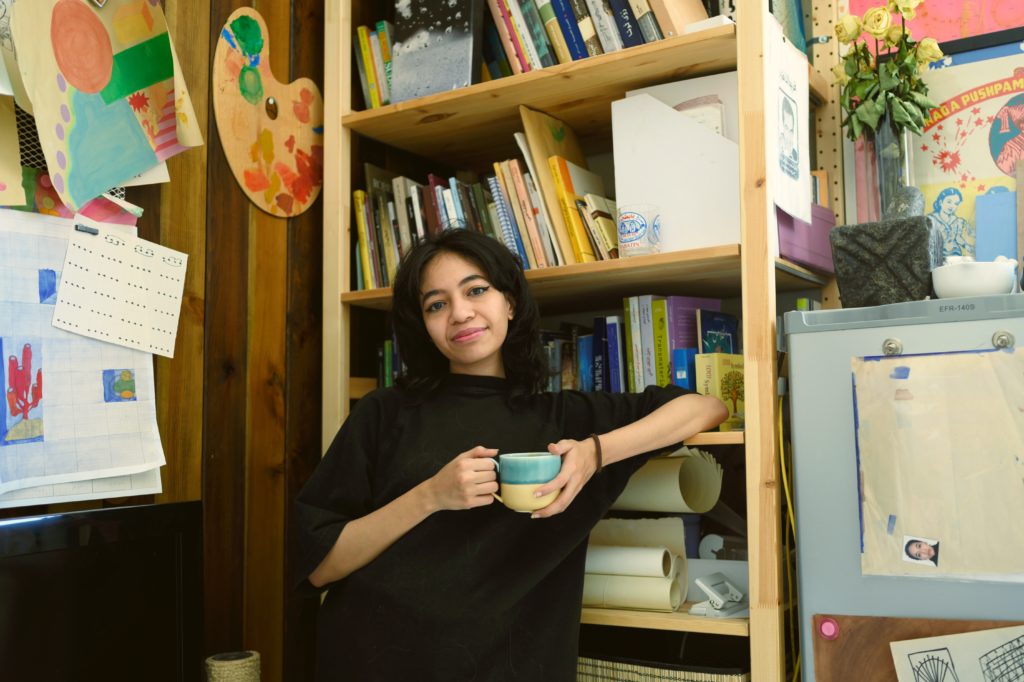
S.M.: From being a self-taught graphic designer you then went on to studying Islamic and Traditional Art. How did that happen?
B.F.: After high school I didn’t go to college, instead I decided to work at a startup. I knew a couple of people working at what is now known as Utern Entertainment. It was a group of 8 people and it was so lovely! While I was working there I was borderline bullied into participating in an art competition by Crossway Foundation where the first 10 winners get to go to London on an art expedition. At that point I was working as a designer and never really went to an art gallery or knew an artist, I just translated that as something similar to designing a poster but making the element 3D instead of 2D so I kind of did that and made my first artwork “Jeem.”
Luckily, and because I had a team of supporters, I won third place and went to London. There with my artist friend, Sarah Al-Abdali, I started to toy with the idea of applying to the same school she applied to The Prince’s School of Islamic and Traditional Arts and wanted to visit while we were there.
I remember just sending my application as a joke with myself thinking no way this graduate school will accept my college dropout self, but they actually did based on my portfolio and interview and I graduated from there in 2017.
S.M.: Describe the process of how you work on your art from start to finish.
B.F.: It's very important for me that whatever project I start working on to be a continuous thread of thoughts of something I already scribbled about before. Reading and research is I’d say my only consistent practice as an artist. I invest a lot of time in compartmentalizing most things I end up researching and make links with content I have using writing tools, or just your old basic note-taking.
The heaviest step on my heart is to make sense of this research, I call it finding the equation; metaphor -> language -> transformation, basically trying to put hand in hand the tools I gained with the tools I created.
Then I start with digitally sketching the work, which usually involves a collage of visual and audio references, 3d models, Pinterest boards, etc.
And finally, production, which to me feels like a vortex where I keep looking outwards for answers but then push myself inwards to lead by the content and tools I already built in the research phase and avoid sailing further away, and I guess that push and pull is what brings out the final work.
S.M.: What is the one piece of work that you are most proud of and why?
B.F.: I’d say my last work “The Jirry Tribe Stop”, a video game commissioned by the Saudi Art Council for 21’39 show in Jeddah just this year. I think simply because it was a very new challenging medium for me, I was so happy about the choices I made on the financing of the work and the team that worked with me on it.
It’s also my favorite because it’s a small idea I had that’s part of a large process and method I’ve been developing for the past few years, usually I’d be so invested in the big idea and thing that the little ones are silly, with this work I think I pushed myself to take the silly idea seriously and that was terrifying and I liked that! So it was a big leap for me.
S.M.: Tell us about the work you are doing to support local upcoming Saudi artists?
B.F.: Well, in 2011 I started this Tumblr blog called Saudi Street Art, it was a submission based blog where people share photos of graffiti they spotted around Saudi. That platform grew now into a collective and community of hip-hop and street creatives that aims to archive the street art movement – in all its forms, we were so lucky to be part of curating two street art exhibitions, Inner Voices (كثرت هواجيسي (2014, and The Waves Won’t Stop When You Leave (لن يقف الموج بعد رحيلك (2019 both in Al-Balad- Jeddah Historical Area.
We consider these shows to be like a present part of our archival efforts. We try to recreate that real experience of being a street artist, which includes being part of planning the show and running it, collaborating with other artists, and most importantly meeting new people and creating those links. During our 2019 show we held a breaking and popping competition in collaboration with Show Your Skills collective, from there we got to meet 40+ year old local dancers, first hip-hop DJ, and some amazing rappers who really know the ups and downs of the movement. The inclusion of that voice in our process is what we ultimately aim for, and whatever we create at the end is just a small step in a big story that needs to be written.
S.M.: What are you currently working on?
B.F.: I’m working on a commission I’m very excited about that’s giving me a lot of good anxiety, aside from that and your typical applications and proposal submissions, I’m just hyper focused on developing my painting and 3D modeling and animation skills.
S.M.: What are your future aspirations for the next few years?
B.F.: I want to put in action the making of a documentary, and a Saudi street art cultural exchange program. Hopefully, a first solo show. I’m also manifesting a studio with a storefront entrance in South London – where I’m moving with my partner.
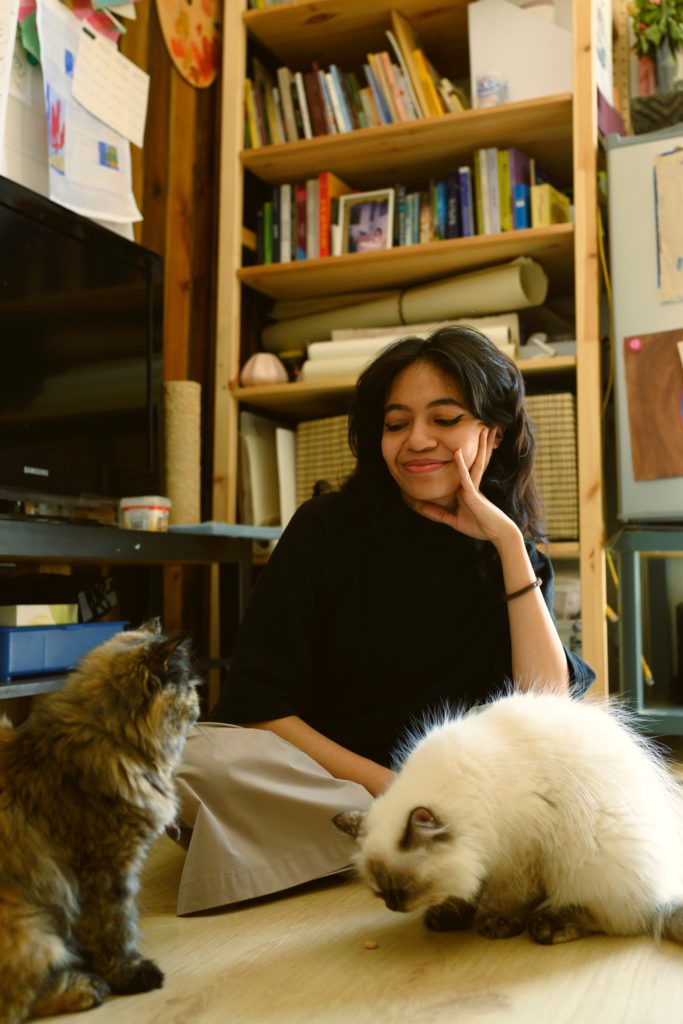
basmahfelemban.com
instagram.com/basmah_felemban

